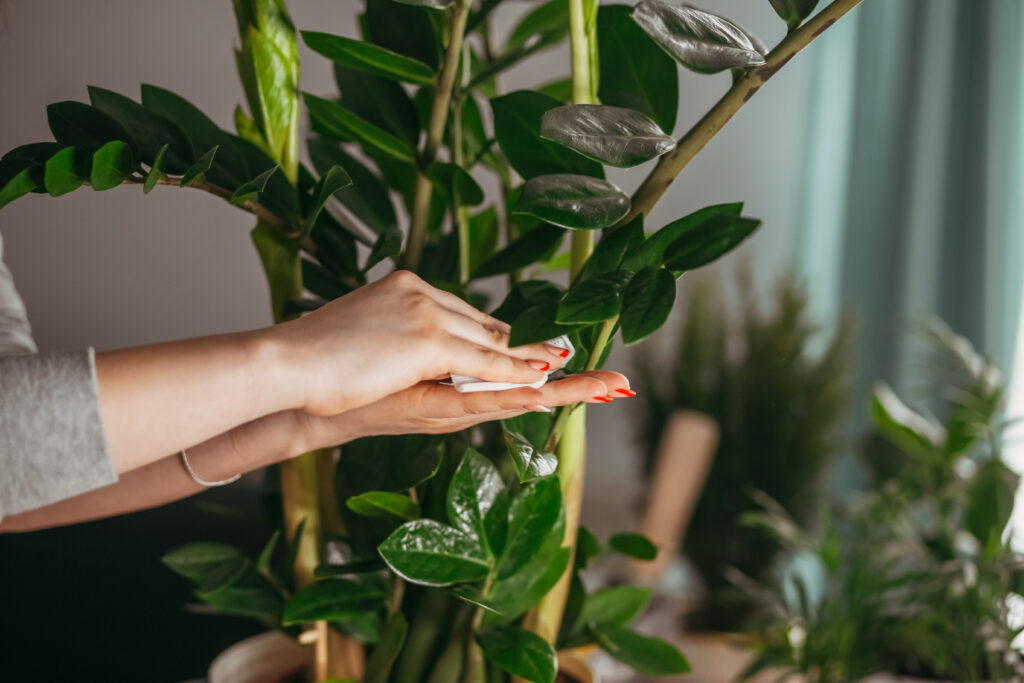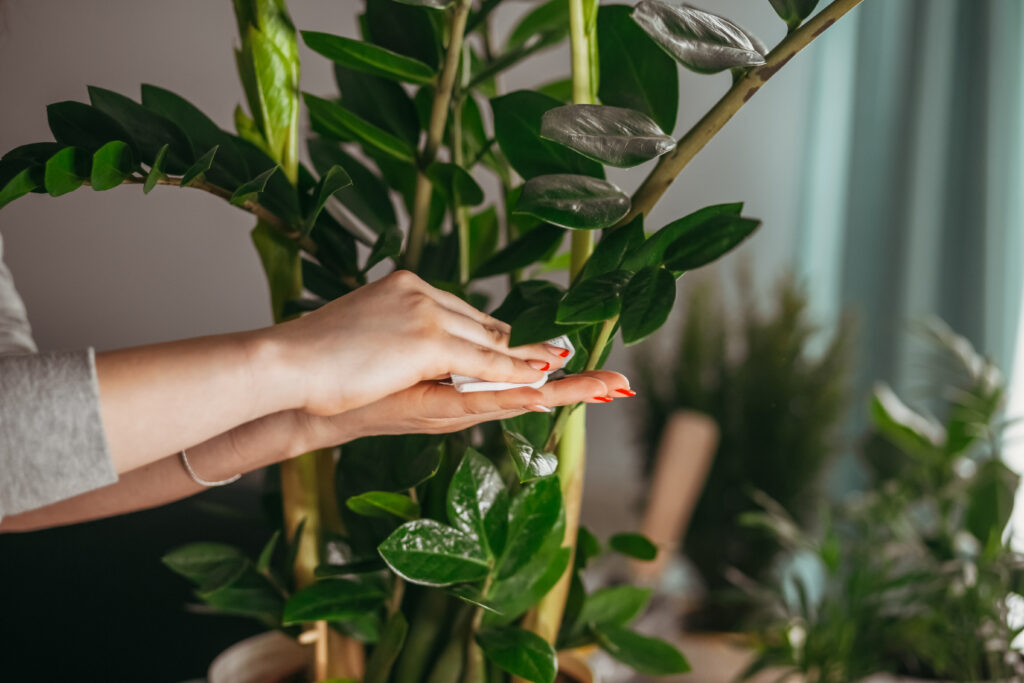
Welcome to our blog! Today, we shall be delving into the marvellous realm of houseplants that flourish in bright, indirect light. We will assess which plants are most suited for this environment and offer some enlightening advice on how to look after them.
Providing they receive the correct amount of sunlight, these specimens can make an excellent addition to one’s home or work area! From low-light varieties that still require some rays through to those species more partial towards sunshine, we shall confer all the necessary knowledge you need so as for you to select precisely what flora is suitable for your space.
Therefore, let us embark upon this journey and discover the top 10 houseplants that love bright indirect light
Understanding Bright Indirect Light and Its Impact on Houseplants

Understanding bright indirect light and its influence on houseplants is essential for cultivating healthy and lively houseplants. For instance, bright indirect light is often considered the most suitable environment for plant development, as it provides ample sunlight without the risk of overheating. To ensure a bright indirect light atmosphere, you should look for windowsills, skylights or any other area in your home that receives abundant sunshine but is shielded from direct exposure.
The intensity of bright indirect light can vary depending on the hour of the day. Still, it is typically much more intense than in shady areas with low light levels. It should be noted that bright indirect light does not suggest direct sunshine; instead, it means a place where your plants can still obtain abundant natural sunlight without direct exposure to its rays. This allows your plants to absorb enough sunlight without the risk of scorching or UV damage.
Understanding how different types of houseplants respond to varying light intensities is crucial. Some plants, like succulents, thrive in brighter conditions, while others, such as tropical foliage plants, prefer slightly lower light levels, thus it is crucial to be conscious of the specific light conditions that are most suitable for each plant type before positioning them in a spot with bright indirect lighting.
Furthermore, if you want your plants to thrive and reach their full potential, consider placing them near a window that receives consistent natural light throughout the day.
Moreover, numerous varieties of houseplants thrive in bright indirect illumination, including African violets and ferns. These are excellent choices for those seeking indoor greenery that doesn’t demand constant attention or frequent watering. Other top options include Peace Lilies, Prayer Plants, and Ponytail Palms, all of which are perfect selections for low-maintenance yet stylish interior decor components!
Top 10 Houseplants That Thrive in Bright Indirect Lighting
Bright indirect light is a great way to introduce colour and vibrancy into any room. Numerous house plants flourish in bright, indirect light. However, it can be challenging to determine which ones are best for you. To assist with your selection, here’s a compilation of the top ten houseplants that flourish in environments with abundant bright indirect lighting:
- Peace Lily (Spathiphyllum)
Peace lilies are popular for their elegant white flowers and are quite adaptable to low-light conditions. These tropical plants thrive when placed in areas with ample brightness and diffused illumination. Keep their soil consistently moist but not waterlogged to enjoy their beautiful blooms.
- Zebra Plant (Aphelandra squarrosa)
The Zebra Plant is a striking houseplant known for its silver-green leaves adorned with yellow stripes and white blooms. Thriving in bright, indirect light, it adds a serene ambiance to homes or offices. Its year-round white flowers complement its dark green foliage, adding elegance to indoor spaces.
- Snake Plant (Sansevieria trifasciata)
Snake plants are renowned for their hardiness and air-purifying qualities. They can tolerate low light but thrive in bright indirect light. These plants have long, upright leaves with attractive variegation, making them a stylish addition to any room. Water sparingly, as they prefer to dry out between waterings.
- Cast Iron Plant (Aspidistra elatior)
As the name suggests, this plant is incredibly tough and can tolerate low light conditions, making it an excellent choice for homes with minimal natural light. It prefers warm temperatures but it can endure cooler conditions thanks to its thick foliage that acts as an insulation against cold draughts from nearby windows or doors.
- Chinese Evergreen (Aglaonema)
Chinese evergreens are valued for their lush, variegated leaves and adaptability to various light conditions. In bright indirect light, their growth is steady and they require little maintenance. Allow the soil to dry slightly between waterings.
- ZZ Plant (Zamioculcas zamiifolia)
ZZ plants are known for their resilience and low-maintenance nature. They have glossy, dark green leaves that add a touch of elegance to your space. In bright indirect light, they grow slowly, making them perfect for forgetful or busy plant owners. Water infrequently, as they store water in their rhizomes.
- Pothos (Epipremnum aureum)
Pothos is an excellent choice for beginners. Its heart-shaped leaves come in various shades, including golden, marble, and neon green. In bright indirect light, they grow vigorously and are excellent at purifying the air. Water when the top inch of soil feels dry.
- Philodendron (Philodendron spp.)
Philodendrons are versatile and come in various shapes and sizes. The Heartleaf philodendron, for example, has heart-shaped leaves, while the split-leaf philodendron has dramatic foliage. They thrive in bright indirect light and prefer to dry out slightly between waterings.
- Calathea (Calathea spp.)
Calatheas are known for their stunning and colourful foliage. They thrive in bright indirect light but are sensitive to direct sunlight. They also appreciate high humidity levels, making them perfect for bathrooms or kitchens.
- African Violet (Saintpaulia spp.)
African violets are compact, flowering plants that do well in bright, indirect light. They produce clusters of colourful flowers and are a delightful addition to windowsills and tabletops. Keeping the soil consistently moist and avoiding water on the leaves are key to their success.
Remember that even plants that can tolerate lower light levels still benefit from occasional exposure to brighter light. Rotate your plants periodically to ensure even growth, and be mindful of their specific care requirements to keep them healthy and thriving in your bright, indirect lighting conditions.
The Role of Sunlight: How Plants Use Light to Grow
The sun is one of the most crucial sources of illumination for plants, essential for their survival and prosperity. Light energy must be converted into chemical energy via photosynthesis, which allows plants to grow, produce flowers, and sustain other organisms in the ecosystem. While sunlight is vital, not all houseplants prefer direct sun. Many thrive in bright indirect light, which offers the right balance of light energy without the risk of damage.
Bright indirect light means that the sun’s rays are reflected off surfaces like walls or windows before reaching your plants, creating a less intense but still sufficient light for photosynthesis. This type of lighting protects plants from excessive heat and UV exposure while providing the energy they need to flourish.
It should be noted that each species has unique requirements, including water and fertilisation needs. Understanding these specific needs is crucial before bringing plants into your home, as it ensures they receive the right care for optimal growth.
Adapting Light Plants to Bright Indirect Environments
Bright indirect light is a testing atmosphere for houseplants, but some varieties thrive under these conditions. Low-light plants are well-suited for such settings, as they require less direct sunlight and a bit more care compared to sun-loving plants.
Successfully cultivating low-light plants in brightly lit indirect environments requires attention and care. Here are some essential tips:
- Consistent Watering: Low-light plants need consistent watering, especially when first introduced to a new location or potting mix.
- Well-Draining Soil: Use slightly acidic soil with effective drainage to ensure success.
- Protection from Drafts: Guard your plants against air currents and sources of excessive heat, like radiators or fireplaces.
- Avoiding Direct Sunlight: Prevent direct exposure to sunlight, as it can lead to wilting or leaf burning.
- Fertilisation: Fertilise low-light houseplants during the active growing season with a balanced, slow-release fertiliser every two weeks. Avoid over-fertilization to protect their delicate root systems.
Regular pruning is also essential for low-light houseplants to stay healthy and promote new growth. Remove dead leaves or branches that shade lower foliage, hindering photosynthesis. Pruning also prevents overcrowding in pots, giving each plant ample space for growth.
Practical Tips for Ensuring Your Houseplants Thrive in Bright Light
In regards to growing houseplants, achieving the right is essential for growing houseplants successfully. Not every plant enjoys direct sunlight, and some require more shade. Distinguishing between bright indirect light and direct sunlight ensures your indoor plants thrive in their new environment.
For plants that prefer bright indirect light, here are some tried-and-true tips for success:
- Selecting the Right Location: Find an area that provides ample natural, indirect lighting. Not all rooms receive the same amount of sunlight, so consider your plant’s specific needs.
- Artificial Plant Lighting: If you struggle to find a suitable location, consider investing in an artificial plant lighting system to provide the right amount of illumination for photosynthesis without exposing your plants to excessive sun.
- Proper Watering: Be cautious when watering houseplants in bright indirect light, as overwatering can lead to root rot or soil-related diseases. Check soil moisture weekly by probing the top inch or two. Water when it’s dry, but avoid keeping roots submerged for too long.
- Filtered Water: Use filtered water when appropriate, as tap water can contain minerals that may harm certain plants. Research your plant’s specific needs to determine the best water source.
Keep an eye out for signs that your indoor plants may need adjustment. Yellowing or drooping leaves may indicate a lack of nutrients, while brown patches can result from excessive direct sunlight. Adjust placement and care accordingly.
In conclusion, there is a wide selection of houseplants that can thrive in bright indirect light. Placing these plants in areas that receive adequate brightness without direct sunlight allows them to benefit from the light they need to grow and flourish. Understanding each plant’s specific requirements is crucial for providing them with the right care and ensuring their success in your indoor environment.
Are you looking to transform your garden? Plant Judo offers premium-quality services at affordable prices. Don’t wait any longer; contact us now and take the first step towards achieving the garden of your dreams!

